Blog Post < Previous | Next >

US Govt.
The Chat GPT prompt that blew up the World Trading System
The prompter, not the AI, was the real source of misinformation
In a recent episode of the Ezra Klein Podcast featuring Paul Krugman, they discussed the impact of Trump’s tariffs announced on Liberation Day. Krugman argued that the formula used by the Trump Administration made no sense economically. Klein mentioned rumors that this formula may have originated from a Chat GPT prompt.
While Krugman emphasized the dangers of AI hallucinations and the importance of domain expertise in identifying them, I believe this situation points to a different problem. The issue may not be primarily AI hallucination but rather the quality of the human input — a classic case of “Garbage In, Garbage Out.”
To investigate this theory, I recreated the Chat GPT prompt that allegedly generated the formula used by the Trump Administration. Here’s the prompt that may have disrupted the World Trading System...

And, here is Chat GPT’s elaborate answer.
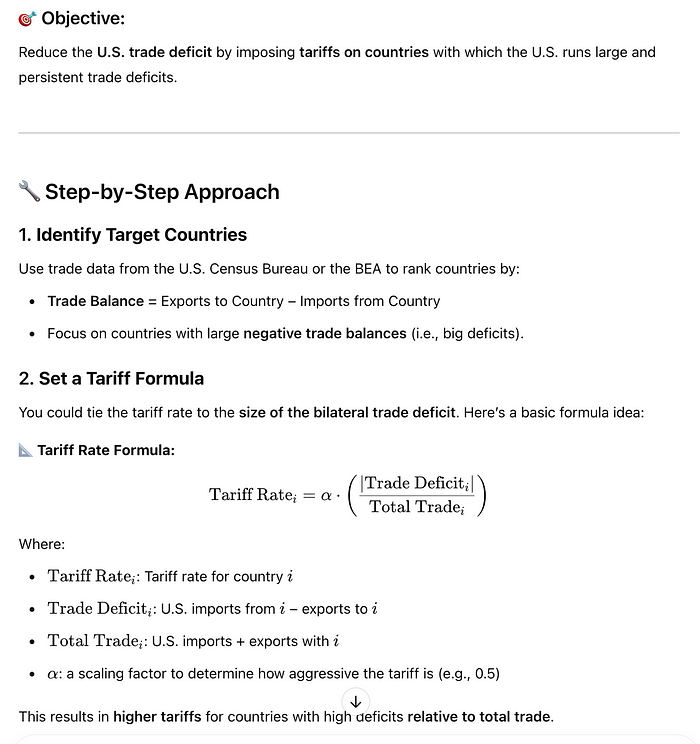
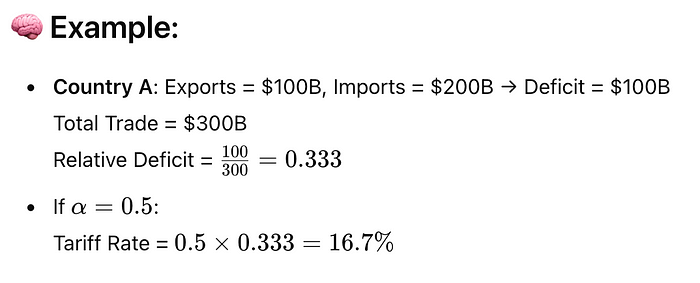
Chat GPT smartly warned the prompter that implementing this formula was not a good idea.

But, the prompter (in this case the Trump Administration) went ahead anyway. That is why if one considers the mentioned formula an hallucination, the responsibility lies a lot more with the prompter than with Chat GPT.
The Trump Administration almost used the exact same formula to calculate their reciprocal tariff level. Even the Alpha factor of 0.5 is the same. (The Trump Administration calculation divides by 2 which is the same as multiplying by 0.5).
The only difference is that in the example above, the Trump Administration calculation would be:
0.5 x (Trade Deficit $100B/Imports $200B) = 25.0% instead of 16.7% following Chat GPT’s formula.
Let’s review and explain the Trump Administration reciprocal tariff formula. See bellow the Administration original document that explains it.
CLICK HERE to view USTR.GOV Reciprocal Tariff Calculationsview USTR.GOV Reciprocal Tariff Calculations
The Administration’s effort to impress includes:
- using a language few understands with many Greek letters
- including many references that few will check or understand regardless if the referenced papers are relevant or not
Below, I copied the main section of the Administration’s document explaining their formula.

And, below are the referenced papers supposedly supporting the Administration’s formula. As we will soon find out, they really do not.
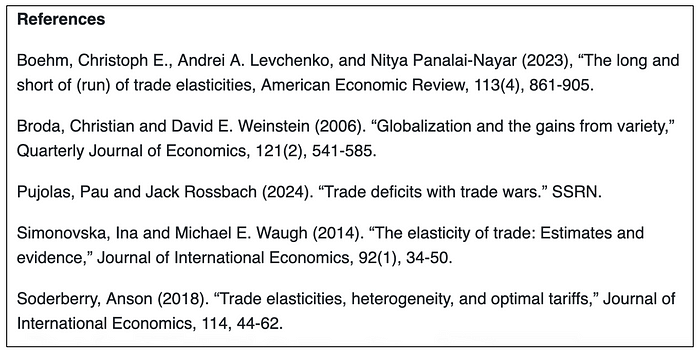
Below see a choice sample of the mathematical language used within these papers.
The following section is from the Boehm paper. I highlighted in yellow the start of this section “It is now straightforward” only to underline the irony behind the opaque mathematical language used within this paper.
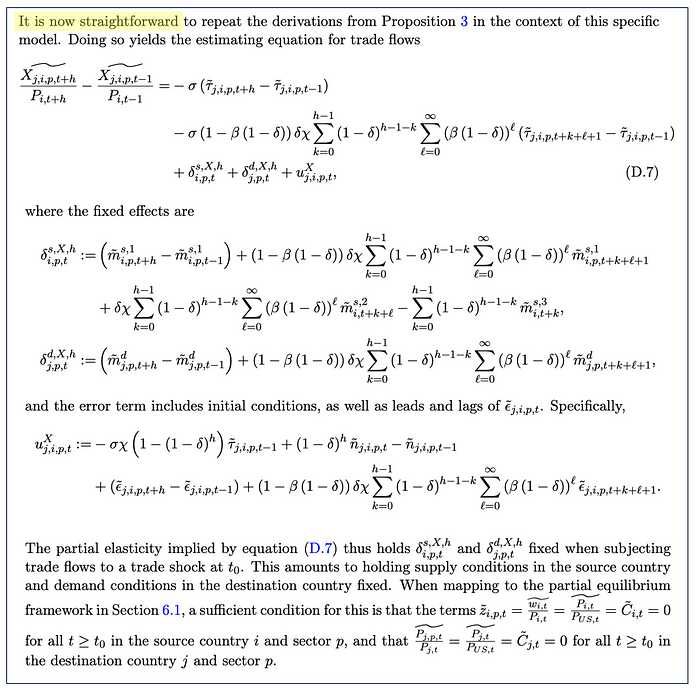
Fortunately, Felix Salmon from AXIOS did a great job of explaining the Administration’s reciprocal tariff formula.
CLICK HERE to read AXIOX "How to read the White House Tariff Formula"
And, I copy his explanatory diagram below. Ok, in plain English the whole thing boils down to Trade Deficit/Imports. Next, you either divide this by 2 or multiply it by 0.5 and you got it.
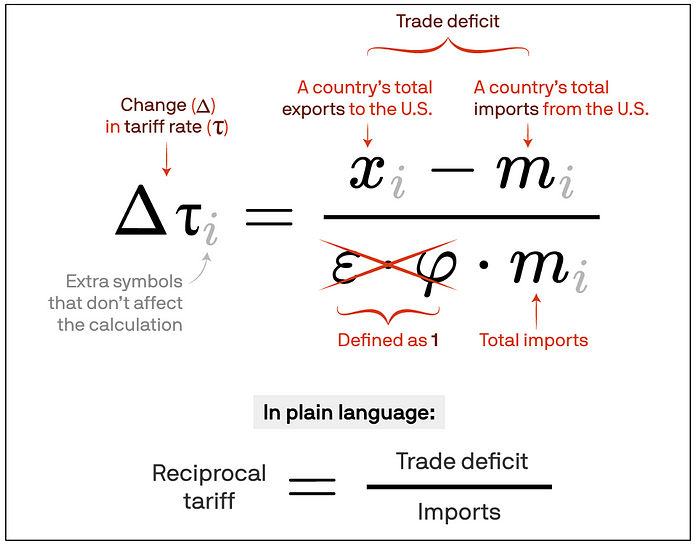
Next, I double checked what the referenced papers were about. And, none of them had anything to do with the Administration’s formula. They were solely focused on the two obscure Greek terms.
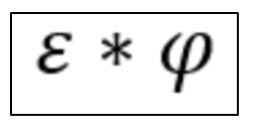
The first term represents the price elasticity of import demand, which was assigned a value of 4. The second term represents the elasticity of import prices in response to tariffs, which was assigned a value of 0.25 (though this seems optimistic — realistically, the price response to tariffs is likely to be much closer to 1.00).
When multiplied together as structured (4.00 × 0.25 = 1), these values effectively cancel out the impact of these elasticities in the formula. This explains why Felix Salmon removed the Greek symbols from the equation.
In summary, none of the cited papers actually informed the structure of the reciprocal tariff formula. The Administration merely included Greek symbols and academic references as window dressing to create an impression of scholarly credibility. This strategy appears convincing until subjected to closer scrutiny.
Historical evidence suggests the Administration’s protectionist policies will fail. We’ve tried this approach before with disastrous results, most notably with the Smoot-Hawley Tariff Act of 1930. That legislation contributed to the collapse of global trade and worsened both the stock market crash and the Great Depression. Similarly, the Liberty Day administration’s current policies appear to be steering the US toward a recession, a serious bout of stagflation, and a significant market correction.
For additional analysis on the ineffectiveness of tariffs, you can refer to my previous articles on the subject.

